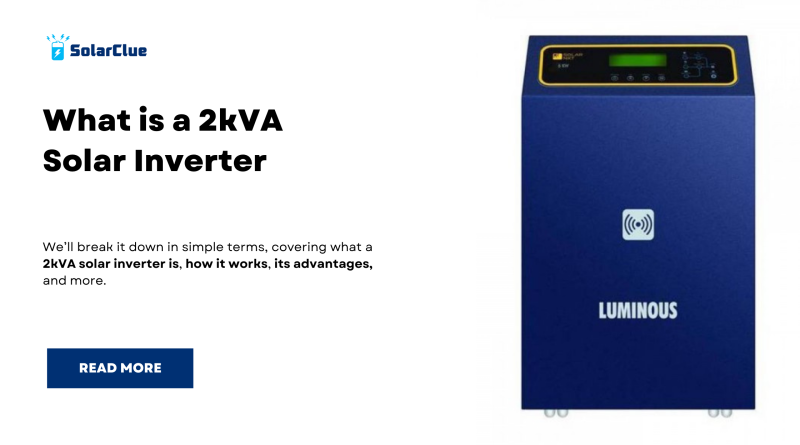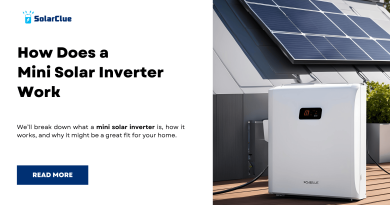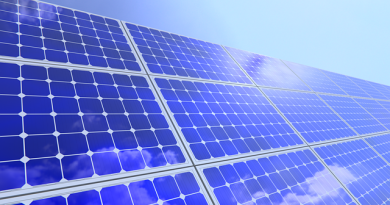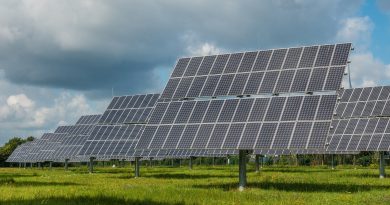2kVA Solar Inverter
If you’re exploring ways to save on your electricity bills and reduce your environmental impact, you might have considered using solar energy. A common term you’ll come across is “2kVA solar inverter.” But what exactly does this mean, and why should you care? In this post, we’ll break it down in simple terms, covering what a 2kVA solar inverter is, how it works, its advantages, and more.
Table of Contents
What is a 2kVA Solar Inverter?
To put it simply, a solar inverter is a device that converts the direct current (DC) electricity produced by solar panels into alternating current (AC) electricity. This AC electricity is what powers most of the appliances in your home. The term “2kVA” indicates the inverter’s capacity, meaning it can handle loads up to 2 kilovolt-amperes. In practical terms, this is typically about 1.6 to 1.8 kilowatts (kW) of usable power.
Why Choose a 2kVA Inverter?
A 2kVA inverter is best suited for smaller households or spaces that do not have high electricity demands. It can effectively power essential appliances such as lights, fans, and a few small electronics without overwhelming the system. This makes it an excellent choice for apartments, small homes, or off-grid living.
How Does a 2kVA Solar Inverter Work?
Understanding the workings of a solar inverter can help you appreciate its role in your energy system. Here’s a simple breakdown of how it functions:
- Solar Panels Generate DC Power: Solar panels capture sunlight and convert it into DC electricity.
- Inverter Converts DC to AC: The 2kVA inverter receives this DC electricity and transforms it into AC electricity.
- Power Distribution: The AC power is distributed to your household appliances.
- Grid Connection (if applicable): If you’re connected to the grid, any extra energy produced can be sent back to the grid, allowing you to earn credits on your utility bill.
Benefits of a 2kVA Solar Inverter
Choosing a 2kVA solar inverter comes with several advantages:
| Benefit | Description |
|---|---|
| Cost-Effective | A smaller inverter is generally more affordable than larger options, making it accessible for those on a budget. |
| Sufficient for Small Households | Ideal for smaller homes or apartments, it can meet basic energy needs without excess capacity. |
| Easy Installation | Many 2kVA inverters are compact and can be easily installed, saving time and space. |
| Energy Efficiency | Modern inverters maximize energy conversion rates, ensuring that more of the generated power is usable. |
| Scalability | If your energy needs grow, you can expand your solar system or upgrade to a larger inverter without too much hassle. |
Choosing the Right 2kVA Solar Inverter
When it comes to selecting a solar inverter, there are several important factors to consider:
1. Type of Inverter
There are various types of inverters available, and each serves a different purpose:
- String Inverters: These are the most common type, connecting a series of solar panels. They are best for installations without significant shading issues.
- Microinverters: These small devices are attached to each panel, allowing for independent operation. This is useful in situations where panels might receive uneven sunlight.
- Hybrid Inverters: These can manage both solar panels and battery systems, allowing for energy storage for use during power outages.
2. Efficiency Ratings
Look for inverters with high efficiency ratings, typically above 90%. The higher the efficiency, the more of the solar energy you can use in your home.
3. Warranty and Support
A good warranty (usually between 5 to 10 years) is a sign of a reliable product. Also, consider the level of customer support available from the manufacturer.
4. Price and Brand
Research various brands and compare prices. While it’s tempting to go for the cheapest option, consider the quality and reputation of the brand as well.
Installing Your 2kVA Solar Inverter
Steps for Installation
- Site Assessment: A qualified professional should assess your home’s structure and electrical systems to determine the best setup.
- Design and Permits: The installer will design your system and obtain any necessary permits from local authorities.
- Installation: This involves mounting the solar panels, installing the inverter, and connecting all necessary wiring.
- Inspection: Before activating the system, an inspection ensures everything meets safety standards.
- Grid Connection: If you are connecting to the grid, your local utility will need to approve your setup.
Maintenance Tips
Once your 2kVA solar inverter is up and running, regular maintenance is essential for optimal performance. Here are some tips:
- Regular Checks: Monitor your inverter for error messages or warning lights, as these can indicate issues that need attention.
- Clean Panels: Ensure your solar panels are free of dirt and debris to maximize sunlight absorption.
- Monitor Performance: Use monitoring tools to keep track of how much energy you’re generating and using.
Conclusion
A 2kVA solar inverter can be a fantastic choice for anyone looking to utilize solar energy in a smaller setting. It provides a reliable and efficient way to manage your home’s energy needs while also contributing to a more sustainable future. Whether you want to lower your electricity bills or do your part for the environment, a solar inverter is a crucial component of your solar energy system.
So, if you’re considering making the switch to solar power, take your time to research and select the right inverter for your needs. The transition to renewable energy doesn’t have to be overwhelming—it can be an exciting step towards a greener lifestyle!
Visit SolarClue® to see the best Solar Inverters. SolarClue® actively sells solar energy products at discounts of up to 50% on its online marketplace.
FAQs
1. What appliances can a 2kVA solar inverter run?
A 2kVA inverter can handle essential appliances such as lights, fans, televisions, and small refrigerators, depending on their total wattage.
2. Can I use a 2kVA inverter without solar panels?
No, a solar inverter requires solar panels to generate DC electricity, which it then converts to AC.
3. What happens if there’s a power outage?
If you have a grid-tied inverter, it will shut down during a power outage for safety reasons. However, a hybrid inverter with battery storage can still supply power during an outage.
4. How long do 2kVA solar inverters last?
Most inverters last between 5 to 15 years, depending on usage and maintenance.
5. Is a 2kVA inverter worth it?
If you have low to moderate energy needs, investing in a 2kVA inverter can help you save on electricity costs and reduce your carbon footprint.
6. Can I upgrade my inverter later?
Yes, if your energy requirements change, you can upgrade to a larger inverter. Just consult with a solar professional for the best options.




